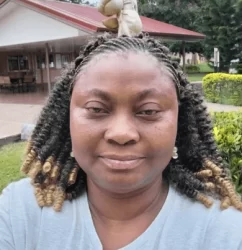Hello out there, I trust you are keeping safe as always. In the past few weeks we have been unpacking some of the insightful discussions from the 3rd Ghana Green Building Summit 2020.
Today, we will share with you some nuggets from the Innovation panel which discussed what the “new normal” design will look like- How futuristic cutting edge products, services and project will transform living and working spaces with respect to the after effects of the COVID-19 pandemic.
The panel comprised of Rasmus Pedersen-Director, Board member-Energy Management company, Vitani – Denmark; Chilufya Lombe- Partner, Solid Green- South Africa; Chineyenwa Okoro Onu –Social Entrepreneur, Environmentalist & MD, Waste or Create Hub and was moderated by -Kweku Essien – VP of Partnerships for Seso Global.
Buildings as Batteries
Rasmus also provided a case study to support his company’s technology or artificial intelligence (AI) approach. He cited the project called Pekive.
This is an innovative project based on the concept of “Buildings as Batteries”
The concept is rooted on the basis that immense thermal energy of large buildings can be used as theoretical battery packs. The aim is to be able to alternate between a national grid as well as renewable energy sources, such as wind and solar.
This is on the understanding that peak solar generation occurs during the day, while peak electricity demand occurs in the evening.
So in order not to waste a building powered by solar energy which is at its peak in the day, power generated from both sources are controlled by making use of the building as a big battery where energy is dumped in and pulled out seamlessly in order to match demand and supply and also avoid waste and unpredictability especially from renewable resources.
This is what informs the Pekive project which harnesses Artificial Intelligence (AI) for energy flexibility and efficiency related to heating and cooling under the – Danish-German Storage Of Renewable Energy (DGSTORE) program.
In Denmark, they harness a great deal of wind energy and with artificial intelligence (AI) this concept can employ green energy to warm up the buildings at night then cease that energy in the morning when everyone is using less energy Rasmus intimated.
He further reiterated that technology can reduce our energy consumption significantly without the necessity of direct human intervention while going a long way in managing buildings in a sustainable way.
What Will the New Normal Look Like? Presented by Chilufya Lombe
Chilufya Lombe reminded attendees that global response to COVID-19 isn’t necessarily witnessing innovations, but a shift of focus by going back to the type of building fundamentals that we needed to be looking at in the first place.
He made reference to indoor air quality for instance, “we have known about it for years, we have known the value of indoor air quality and building occupants’ health, but now it’s sort of becoming something that cannot be ignored”.
“In the future, there are a number of things we look forward to seeing. These include a number of companies providing little pods for home office (4x2m).
This solution helps with controlling your own indoor environment, providing energy security, providing the kind of IT infrastructure that you want and we seeing more sort of the corporate, commercial clients actually willing to offset the cost for some kind of home office or place for the person to work” Chilu reaffirmed.
The Virus Index
This new normal is going to bring about new metrics and new ways of validating buildings. Previously, buildings were looked at in terms of energy, carbon reduction and all of that making it an interesting metric to come across.
Now however, there is an indoor air quality monitor called the virus index and what this virus index does is that, it creates a calculation from the conditions that are in the space and gives you a measure of how susceptible your space is to pathogens that spread diseases, be it air borne or through touch surfaces.
Key part of that calculation is ventilation; how much carbon dioxide versus how much fresh air is in your space.
This has a direct effect on how quickly pathogens filter out to prevent spread of diseases. The safe levels are indexed from 1-10 with 1 being the safest and ideal.
The Great Sustainable Reset – Presented by Chineyenwa Okoro Onu
Chineyenwa disclosed that a new concept of human mobility will emerge – if people can’t relocate for work, work will relocate for people.
In essence, work will come to you whichever continent or country you find yourself in. You can access jobs and work remotely without travelling out or constrained by physical borders.
It is important that we think about the new concept of human mobility, a lot of new companies have had to look at their strategies and the huge budgets for fancy work spaces are now rethinking their models.
The future of work post COVID will definitely not be defined by structure, but will be defined by flexibility, mobility and collaboration.
Innovative Work Spaces
Chineyenwa opined that work spaces will evolve and we will start having open air spaces with the conventional desk arrangement structure giving way.
We will see more wall strip lighting instead of the harsh overhead lights, smart meeting rooms optimized with smart cameras, window cloaking treatments which will allow for laptop screens not to be seen from outside, private lounge chairs and work stations, lounge areas for refreshments, huddle rooms paired with development rooms to allow two person rooms to allow for creativity etc.
There could also be standing desks which can help in the promotion of health and exercise as a result work will start moving virtually.
Citing the study of Cisco Webex System, an amazing architecture design model adopted by many organizations, Chineyenwa urged its adoption which then enables a sustainable or a proper green structural work place setting.
PRESENTED by Rasmus Pedersen-Director, Board member-Energy Management company, Vitani – Denmark; Chilufya Lombe- Partner, Solid Green- South Africa; Chineyenwa Okoro Onu –Social Entrepreneur, Environmentalist & MD, Waste or Create Hub and was moderated by -Kweku Essien – VP of Partnerships for Seso Global.










